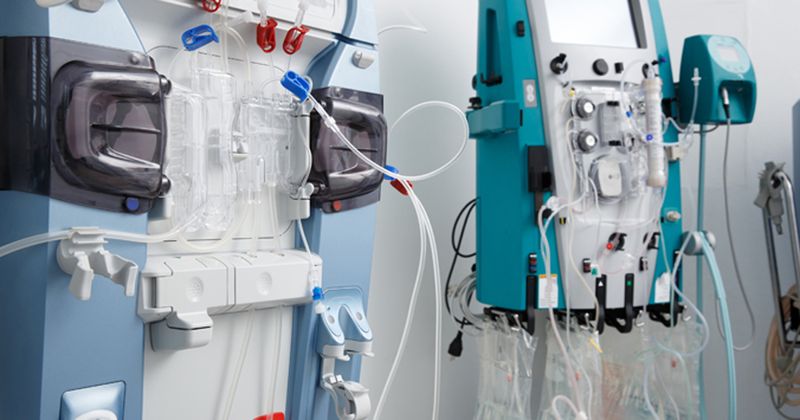Novel liver dialysis device yields ‘rapid clinical effect’ in patients with liver failure
Key takeaways:
- Treatment-emergent and serious adverse event rates were similar between Dialive and standard care groups.
- The device positively affected organ function, with faster resolution of acute-on-chronic liver failure.
The Dialive device significantly reduced severity of endotoxemia and improved albumin function in patients with acute-on-chronic liver failure and appears safe with careful patient monitoring, according to data in the Journal of Hepatology.
“Dialive is a novel liver dialysis device invented at University College London,” Rajiv Jalan, PhD, lead investigator and professor of hepatology at the university’s Institute for Liver and Digestive Health, said in related press release. “It is based on an understanding of the mechanisms underlying ACLF, which are what we are correcting with this machine by exchanging dysfunctional albumin and removing damage- and pathogen-associated molecular patterns.”

Image: Adobe Stock
In a first-in-human, randomized controlled trial, Jalan and colleagues enrolled 32 patients (mean age, 49 years; 75% men) with alcohol-related ACLF to evaluate the safety of Dialive (n = 17) vs. standard of care (n = 15). Researchers also assessed the device’s performance and effect on pathophysiologically relevant biomarkers.
Patients in the Dialive arm received treatment for up to 5 days with the primary endpoint — the percentage of patients who experienced at least one serious adverse event — assessed at day 10. Therapy was administered for a median of three sessions, with each session lasting 8 to 12 hours, in the first 3 days.
According to results, treatment-emergent adverse events occurred in 76.5% of patients in the Dialive group and 80% of patients in the standard of care group, with no significant differences between groups (95% CI, 0.35-0.29). At least one serious adverse event occurred in 64.7% and 53.3% (95% CI, 0.29-0.51), respectively.
Of the serious adverse events in the Dialive group, researchers considered 41.2% related to treatment. The most common serious adverse events in both groups were hypotension (52.9% vs. 20%); thrombocytopenia, anemia or bleeding (47.1% vs. 26.7%); and bacterial infection (53.3% vs. 35.3%).
Researchers also identified a “significant reduction” in severity of endotoxemia and improved albumin function in the Dialive group, with similarly significant reductions in 10-day scores for Chronic Liver Failure consortium (CLIF-C) organ failure (P = .018) and CLIF-C ACLF (P = .042). Time to ACLF resolution was also faster among patients in the Dialive group (P = .036), and improvements in biomarkers of systemic inflammation were significant in this group as well.
No significant differences were reported in 28-day mortality or serious adverse event occurrence between groups.
“This is the first treatment that has shown such a rapid clinical effect in patients with ACLF,” Steffen Mitzner, MD, PhD, co-lead investigator from the division of gastroenterology and endocrinology at Rostock University Medical Center, said in the release. “The patients that resolved ACLF remained free of ACLF for 28 days despite only being treated with the device for 3 days. The improvement in biomarkers underlying the pathophysiology of ACLF was sustained even 5 days after stopping therapy.”
Jalan added: “These data indicate that Dialive may be a disease-modifying therapy for ACLF patients and could impact the outcome of patients with ACLF, for which there is no available therapy except liver transplantation available to a very small minority of these patients. The potential impact is huge if these data can be confirmed in larger clinical trials.”
Reference:
- New liver dialysis device shows potential to resolve liver failure in patients with acute-on-chronic liver failure. https://www.elsevier.com/about/press-releases/research-and-journals/new-liver-dialysis-device-shows-potential-to-resolve-liver-failure-in-patients-with-acute-on-chronic-liver-failure. Published June 1, 2023. Accessed June 6, 2023.

